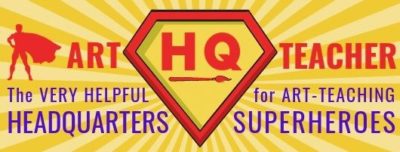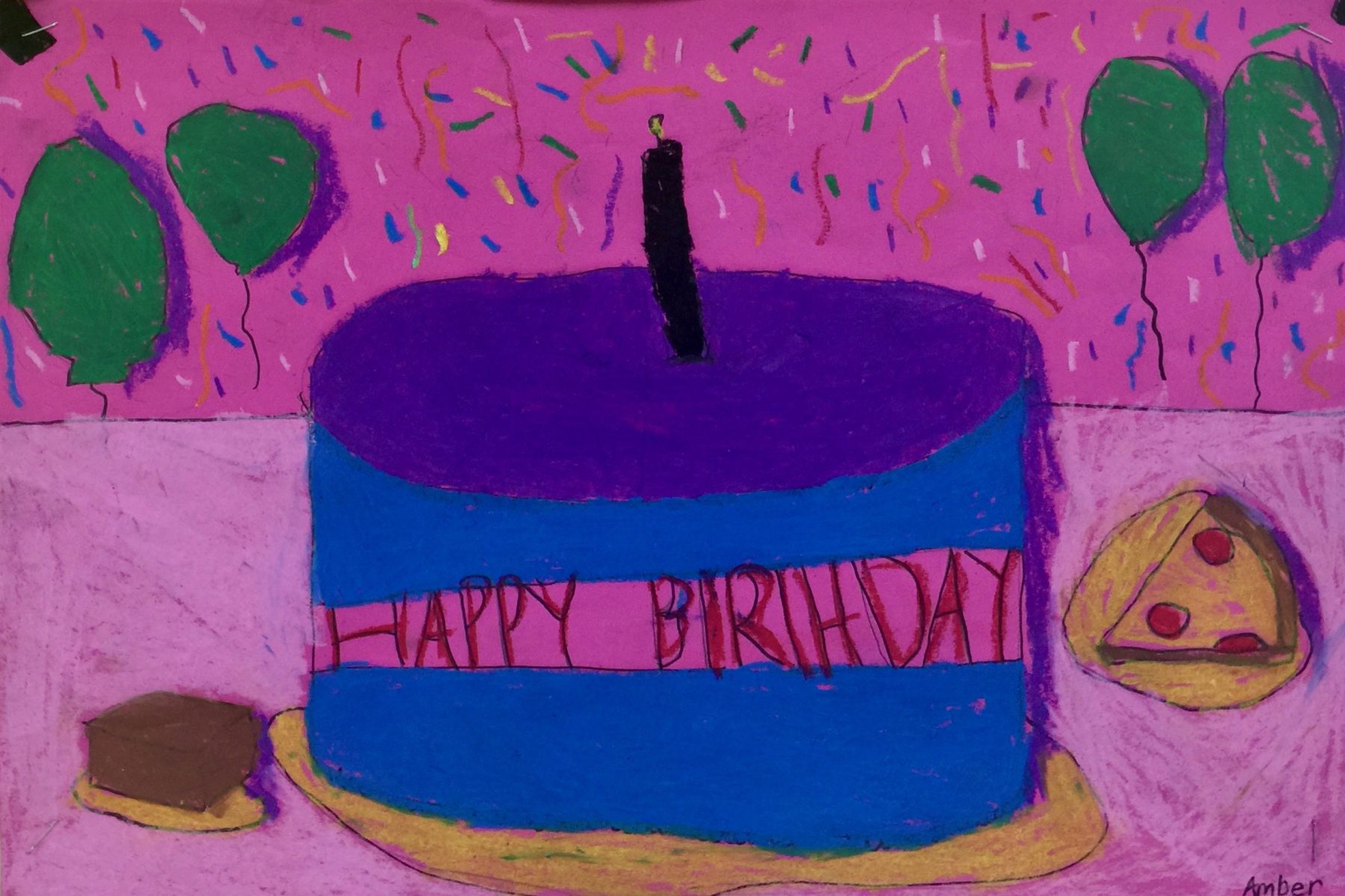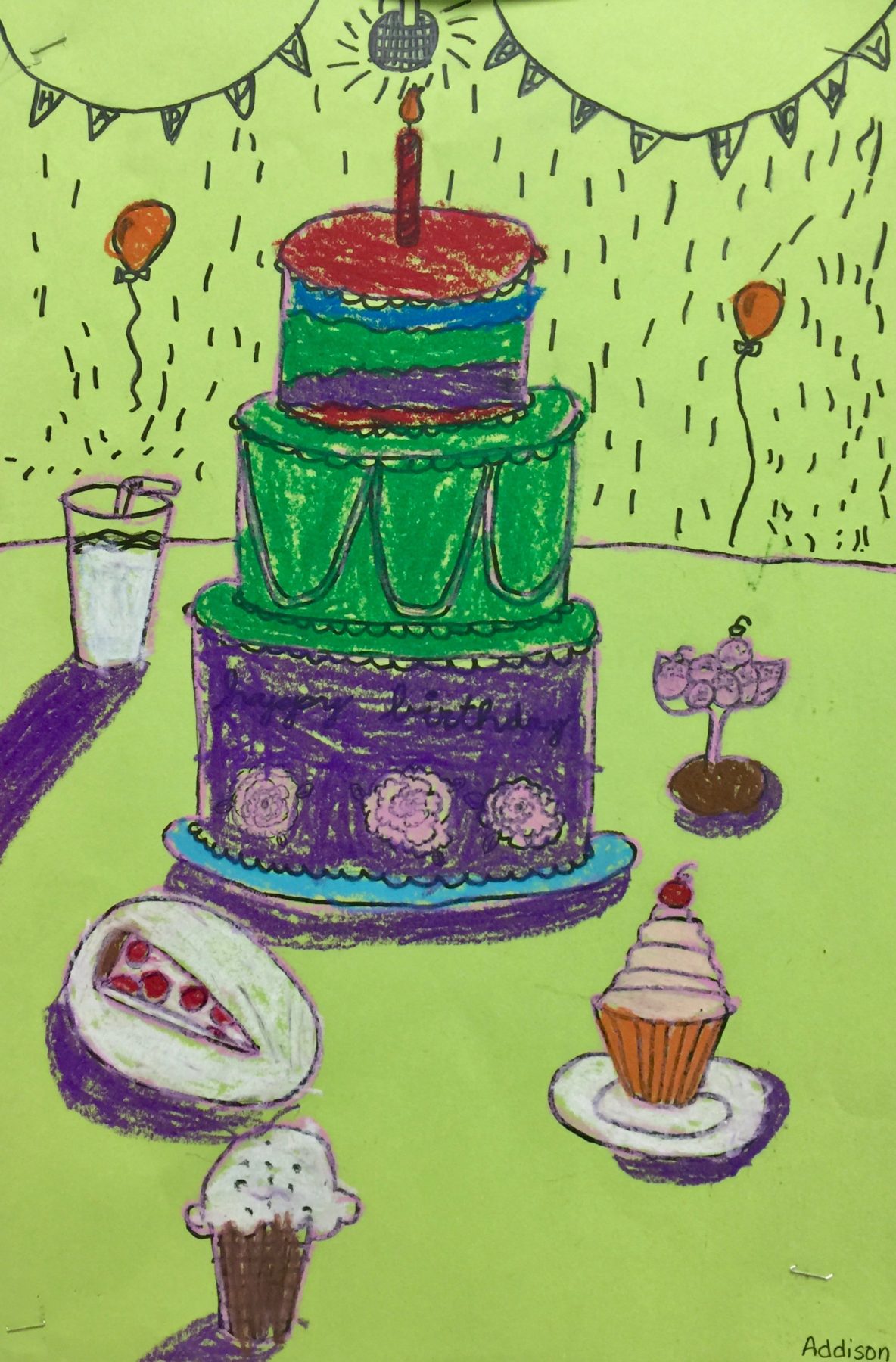Art that Looks Good Enough To Eat
Maybe it’s because I have a major sweet tooth, but I absolutely love the art of Wayne Thiebaud! His colorful paintings of cakes, pies, and junk food have inspired many an elementary art project (while making art teachers and students everywhere hungry for dessert!). Wayne Thiebaud’s paintings are a perfect starting point to introduce the element of form and teach young students how to create the illusion of space as they learn to draw a 3D birthday cake.
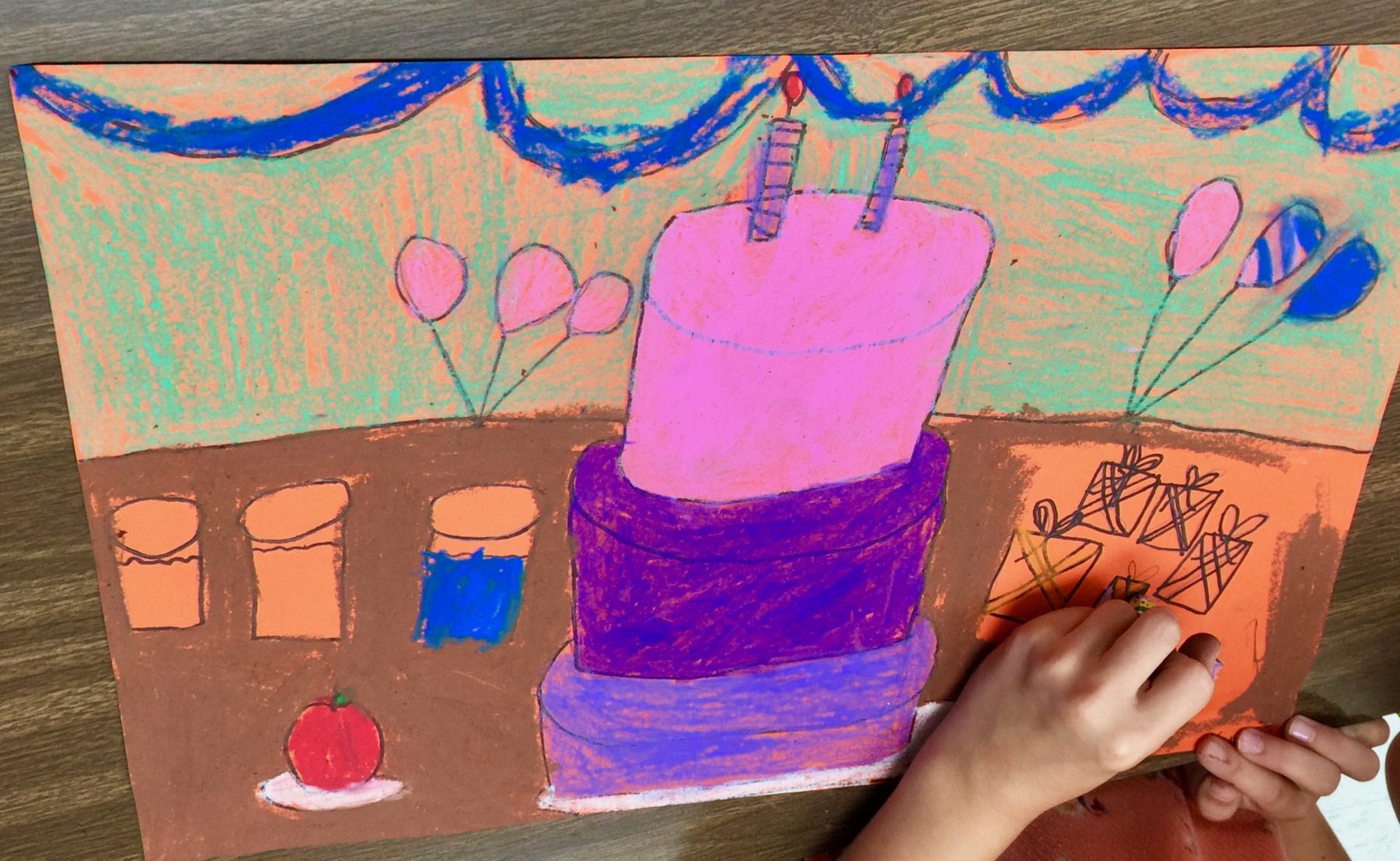
I teach this lesson to second grade, and the first thing we do is look at art by Wayne Thiebaud (pronounced “TEE-bow”). The kids are immediately engaged–maybe because junk food is usually off limits, it feels indulgent to get to look at and talk all about these sweet treats in detail. An American artist born in 1920, Thiebaud did NOT want to be grouped in with the Pop Art movement (though it seems like his colorful commercial style would fit right in with it)–“I don’t care for pop art at all” he stated in 2014.
Introducing Students to Wayne Thiebaud
We discuss some of the characteristics that make Thiebaud’s work so recognizable, such as thick paint with the consistency of real icing, colorful outlines, shadows, and variety within unity–even when painting the same item several times in a painting, each has its own variations (for example, almost all the cakes in his 1963 painting Cakes, in the National Gallery of Art, are cylinders but the decorative details are different on each). I show a slideshow of Thiebaud’s food paintings, and students start to point out each of these stylistic tendencies in different artworks.
Then I show a great video of Thiebaud from CBS This Morning–this really helps the students see the thick, textured paint much better than just viewing his art online. (I usually only play the first 2 minutes of the video–just fyi, if you do play more of it in class, watch out toward the end because Thiebaud is standing in front of rather risqué painting.)
Shape Versus Form
Before we really begin our birthday cake project (in fact, usually before I show Wayne Thiebaud’s work at all), I have my second-graders do a “pre-drawing” of what they think a birthday cake looks like. They usually draw a side view that looks like stacked rectangles, or some might draw a bird’s eye view looking down on top of the cake (a circle or rectangle). Then we talk about the difference between “shape” and “form,” and we look at ways Thiebaud made his forms look 3D (showing the top AND side of a slice of pie, for example, adding shadows, etc.).
The following week I show a second video, this one from Art for Kids Hub, that teaches how to draw a 3D birthday cake. (Before viewing, we go ahead and discuss what “foreshortening” means and how a “foreshortened circle” is an oval.)
I have the kids do a practice drawing as they follow along with the video (on the back of their pre-drawing sheet to save paper!), and then I also show them how they could add a second or third layer to their cake if they want.
Party Time!
When students are ready, they can choose a brightly colored sheet of 12″x18″ construction paper and draw their 3D birthday cake! We talk about filling in the scene as if they are celebrating their own birthday or the birthday of someone special to them. Students can add other favorite foods on the table (on oval or “foreshortened circle” plates, so that the viewpoint is the same as the cake). I have them add a line for the table edge so that the objects don’t look like they’re floating. Then in the background, they can add a banner, balloons, confetti, streamers–anything that makes it feel like a party!
Students draw with pencil first and then outline with black Sharpie before coloring in with oil pastel. I encourage them to press hard and fill in the shapes with solid color, and then to add bright outlines and bold shadows just as Wayne Thiebaud would do. The kids get so excited about these and have fun decorating their cakes, adding their own favorite foods, and especially learning how to take their art from flat shapes to forms that look 3D. It’s also fun to have them compare their pre-drawing cake to their final artwork and see how much they’ve learned!
One thing to consider before starting this project–depending on your student population, you may want to change it from a “birthday” cake to just a favorite cake or pie. (I have worked with kids before at a summer camp who mostly did not live with their own families and therefore had not really experienced birthday parties; others may not be allowed to participate in birthday celebrations for religious reasons).
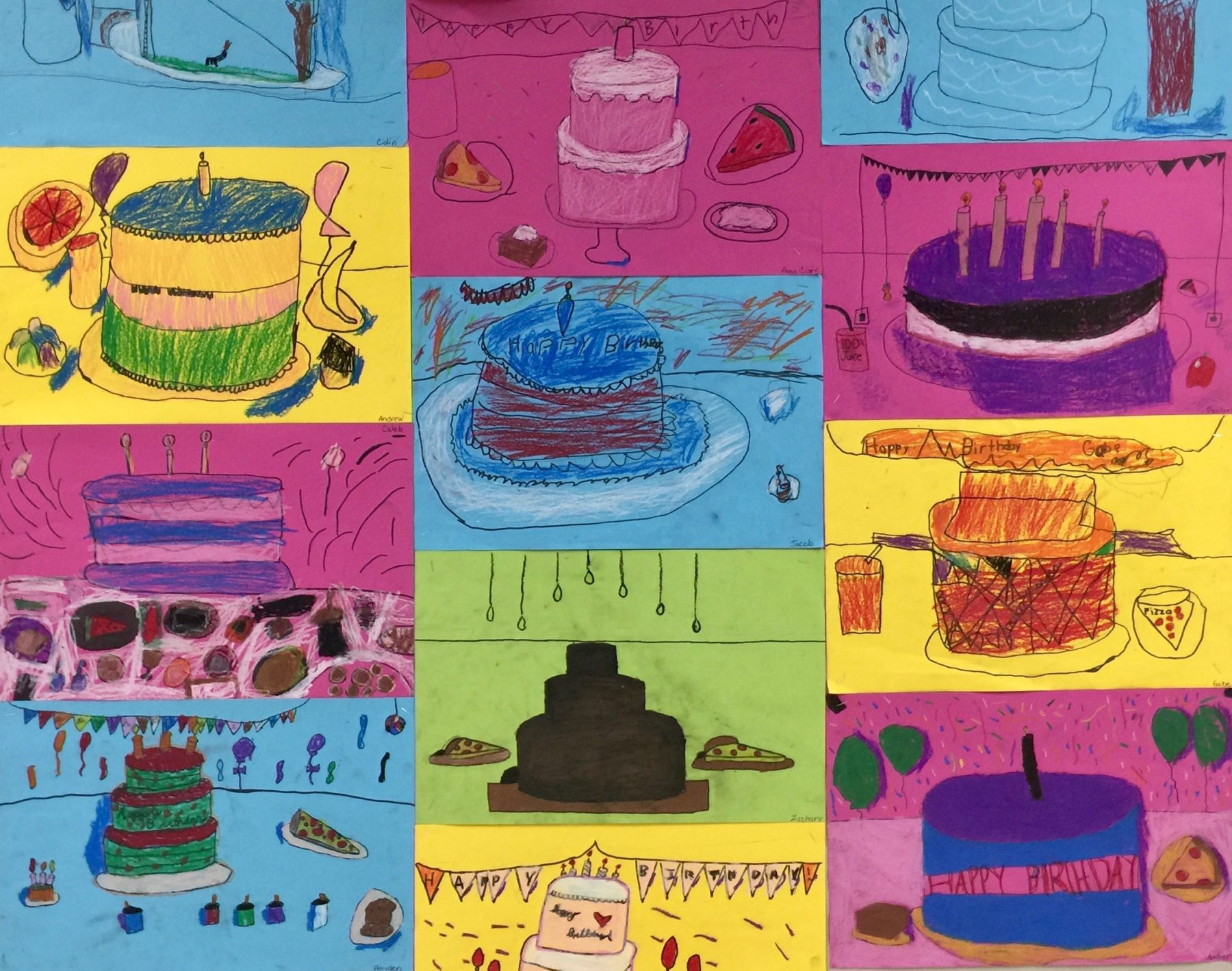
Please let me know in the comments below if you try this Wayne Thiebaud-inspired project and how it goes! I’d also love to hear what other projects you use to teach shape vs. form. You may also want to check out this hot chocolate mug or cup of lemonade project. Happy art-making!
